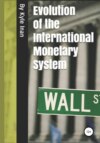Kitabı oku: «Evolution of the International Monetary System», sayfa 2
To summarize, there are primarily three distinct factors that can cause a shift in the supply of gold curve. The three factors are: (a) If there is an increase in the number of producers; for instance, if new gold mines are discovered. (b) If the cost of production changes; for instance, if transportation becomes cheaper. (c) If there is a considerable change in the technology of production; for instance, it might become easier and less costly to extract gold with newly advanced technology.
Furthermore, a most remarkable feature of the gold standard system was its included benefits at the operational level. For instance, the money supply was independent of any government action mainly because the money supply would grow or expand at the same rate (simultaneously) with the gold supply. If there were no new discoveries of gold, then there would not be an expectation for an increase in the money supply.
Since governments had no control over the money supply under the Gold Standard, due to the aforementioned reasons, they would not be able to arbitrarily print more money and cause inflation. Therefore, there was virtually no possibility of inflation under this system. In other words, this system had promised long-term price stability to its owner, which could be described as its most significant benefit.
A second benefit of the Gold Standard was its unparalleled ability to cure its own disease, even in times of inflation. For instance, under inflationary situations, we would normally experience an increase in the price of goods and services and a decrease in gold prices. As a reaction to the change in the price of gold, producers in the economy would switch their resources to the production of goods and services instead of gold and the supply of gold would go down. As less gold is supplied, the prices would go down. Therefore, under the Gold Standard System, there was also a double attack on inflation.
A third most noticeable benefit of the Gold Standard was the “Law of One Price.” This meant that there would be a tendency for all countries under the gold standard to have the same general price levels. As an example, if we were to assume that there were two countries (A & B) with general price levels being PA and PB respectively, and if PA > PB then, under free trade conditions, country A would import goods and services from country B and pay for those imports in terms of gold. In the outcome, for country A, goods and services would arrive and gold would be lost from that country. After a while, PA would start declining. Concurrently, in country B, goods and services would be lost after gold is gained following the transaction. After a while, PB would increase. Eventually, the prices would be equal to each other. (PA = PB)
At this point, we might be inclined to ask ourselves such questions as “What went wrong with the Gold Standard System” or “Why was it dismissed in the first place if it promised such numerous advantageous compared to other international monetary systems?”
In essence, a deeper examination into the intricacies of what is called the “price-specie-flow” mechanism will provide insights into this question and help us clearly understand the actual causes in explaining the deficiencies of the Gold Standard System leading up to its collapse after its abandonment by the United States and Britain in 1931.
Price-Specie-Flow Mechanism under the Gold Standard
During the last half of the nineteenth century, the persistent outflow of capital, along with the simultaneous rise in interest rates around the world has necessitated the establishment of a price-specie-flow mechanism. This system, founded by David Hume, intended to coordinate capital flows and help central banks restore their balance-of-payments equilibrium.
By proposing this mechanism, Hume argued against the idea of having countries strive constantly to maintain a positive balance of trade. The following logic behind this approach was whenever a country had a balance of trade surplus; it would attract a certain quantity of gold in the same amount that the value of exports exceeded the value of imports. Similarly, the opposite of this situation would happen in countries running a trade deficit. This would mean that there would be a gold outflow in the same amount that the value of imports exceeded the value of exports.
In the absence of a monetary authority to regulate the quantity of gold in circulation, the money supply in the country running a positive balance of trade would increase while the money supply would decrease in the country running a trade deficit. Then, based on the principles of quantity theory of money, the country with the money surplus would experience inflation as well as a simultaneous increase in the prices of goods and services, whereas the country with the money shortage would go through a period of deflation after devaluation of goods and services. In essence, the emergence and the implementation of the price-specie-flow mechanism came with the idea of allowing gold to be the only currency in the world (or any other paper currency convertible into gold that would circulate in lieu of other metals.
The most dynamic and remarkable characteristic of this system was its “durability” which was concretely based on the premise of completely abolishing the imposition of import controls and thereby purporting to effectively facilitate the cross-border of goods and services around the world.
For instance, in countries where this system was adopted, each time a commodity was exported, the exporter of that good would receive payment in gold and the importer purchasing certain merchandise abroad, would make payment by exporting gold. For a country with a trade deficit, the number of imports would exceed the number of exports. The deficit country would then experience a significant gold outflow. “With less money (gold coin) circulating internally, prices would fall in the deficit country. With more money circulating abroad, prices rose in the surplus country. The specie flow thereby produced a change in relative prices (hence the name “price-specie-flow model”). (Eichengreen, 2008, pg. 24)
In return, domestic residents would decrease their purchase of goods and services since imports would become more expensive whereas the foreign residents would increase their purchase of goods and services since imported goods would become less expensive for them. While the country running a balance of payments deficit would experience a rise in its exports and a decline in its imports until up to a point where the balance of trade is restored. This formulation of the balance of payments equilibrium created by Hume proves us the multiple benefits as well as the way in which the gold standard system has operated.
In addition to its ability to restore the balance of payments equilibrium in countries with a trade deficit, the high level of openness granted by the gold standard system had also served to expedite the process of economic integration which mostly benefited the world's leading exporters. Even though this system supremely favored Britain as the vanguard of this system. “Because, London was the center for the world’s principal gold, commodities, and capital markets, because of the extensive outstanding sterling-denominated assets, and because many countries used sterling as an international reserve currency (as a substitute for gold), it is argued that the Bank of England, by manipulating its bank rate, could attract whatever gold it needed and, furthermore, that other central banks would adjust their discount rates accordingly.” (Braga de Macedo & Eichengreen & Reis, 1996, pg. 17)
Therefore, it could just as easily be argued that the Bank of England had the financial prowess and the capacity to exert a powerful pressure on the price levels as much as on the money supplies of other countries that were adhering to the rules of the gold-standard.
Contrary to its financial comparative advantages, the gold standard system also had three distinct shortcomings. Costs of this system included the tricky position that governments had to deal with, which forced countries to obey a set of stringent rules and surrender the control of their money supply. For instance, under this system, (I) countries were expected to fix the mint price at a par value and legalize melting of gold coins which were basically unfavorable requests for countries that were short of gold reserves at the time. Another pitfall of this system was the fact that (II) one metal was given too much importance which essentially favored countries with gold mines than those without, which also turned it into a biased system.
Nevertheless, the greatest deficiency of this system was (III) whenever a member country would decide to break the rule, it was set to gain from it. For instance, if we were to suppose that the general price levels are greater in country A than in country B (if PA > PB) and if country A was to quietly break the gold standard rule and increase its money supply (even if it does not have enough gold), then it would still keep on importing goods and services from country B and continue to pay in gold while maintaining higher price levels. Thus, according to the rules, if a country was running a trade deficit, it had to allow a certain amount of gold outflow until its price level was restored to the par value exchange rate of other countries. Some countries in Europe, such as France and Belgium that were operating on the gold standard system, chose not to follow this rule.
An example of a case where this rule was strictly observed was the case of the Central Bank of England, also known as the Bank of England. During the gold standard era, the Bank of England engaged in a leadership position as the most influential mechanism that would enforce the gold-standard regime. It has done so by strategically utilizing its monetary policies to maintain a certain level of gold convertibility.
In response to the demands of the Bank of England, other central banks in Europe acceded to the new policies it imposed by and assumed a passive stance. This was largely because of the benefits that they were able to accrue by clinging onto the sterling as the reserve asset. “Britain financed exports and imports in sterling bills, other countries their third-country trade also in sterling bills. Other countries thus had to hold balances in sterling.” (Kindleberger, 1993, pg. 71)










